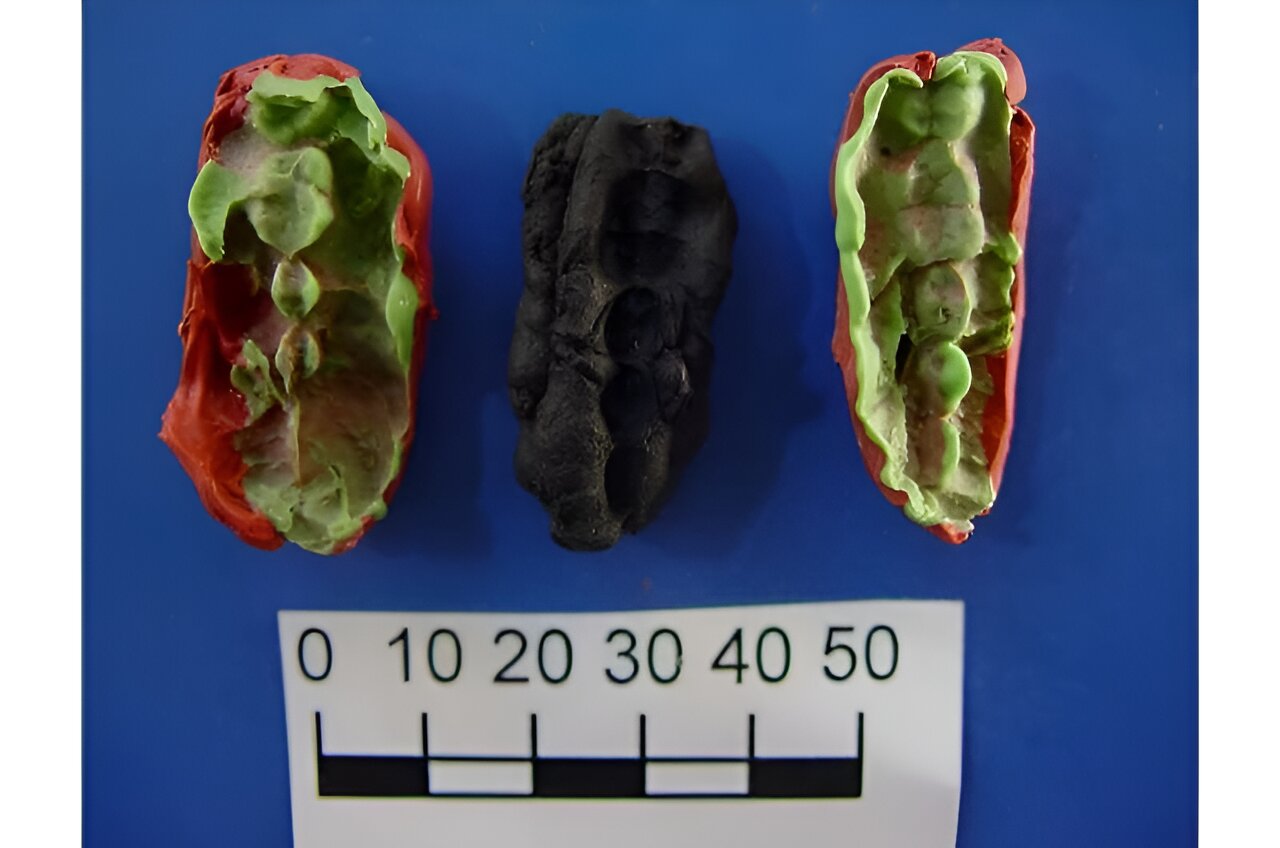L2021PS fantasmagorie sem píšeš ty, na denní bázi. Přestaň brát drogy, a pak ti začne myslet.
https://en.wikipedia.org/wiki/Birch_tar
Tartar, periodontal disease and the last meal: Chewing gum with Stone Age tooth impressions as canned DNA
Categories: Nálezy nejenom s detektorem ve Skandinávii
Around 9 700 years ago, Mesolithic hunters and gatherers camped on the western coast of Scandinavia. The group included youngsters who chewed resin. Thirty years ago, research at the same site revealed 1,849 flint artefacts and 115 pieces of resin. Now their DNA analysis has yielded fascinating and detailed information about what the youths were eating on that day 9,700 years ago, the state of their teeth and oral microbiome, or where their ancestors came from.
The Mesolithic site of Huseby Klev lies north of Gothenburg. Some of the resin pieces bear impressions of the teeth of teenage children. The resin samples analysed were made from birch bark resin, which is known to have been used as an adhesive in the manufacture of stone tools since the Middle Palaeolithic. However, it was also chewed in traditional societies for recreational and medicinal purposes.
In some resin samples, half of the extracted DNA was of human origin. This is a much larger amount than is found in bones and teeth. This is one of the oldest human genomes from Scandinavia. It has a special profile of ancestry among the hunters and gatherers who once lived there. Both male and female DNA has been detected. Archaeologists believe that the teenagers chewed to prepare glue for use in making tools, such as attaching a stone axe to a wooden handle.
Some of the DNA came from organisms, such as bacteria and fungi, that got into the pitch later. But some of it belonged to the bacteria of the people who chewed it. And the other part was material that humans ate before they decided to chew pitch. The analysis of all these pieces of DNA was a very complex and demanding process that required the latest technological techniques.
In the process, the scientists discovered the bacteria of the oral microbiome, which is a series of naturally occurring microorganisms found in the mouth. They also found traces of bacteria involved in tooth decay (Streptococcus mutans) and systemic diseases such as Hib, which is particularly dangerous for children, and endocarditis. Bacteria that can cause abscesses have also been found. A number of other bacteria are associated with a serious gum disease, periodontal disease. When the researchers used a machine learning method (in this case, a technique called Random Forest), they concluded that one of the girls was more than 75% likely to have periodontal disease.
In addition to bacteria, DNA from higher organisms was also discovered, notably red deer, trout, mallard duck and traces of hazelnuts and apples. This DNA probably came from material that the teenagers ate before chewing the resin. Significant amounts of fox DNA were also discovered, but scientists consider it uncertain to interpret it as food. The youths may have chewed tendons and fur from the foxes to make clothing, or the fox DNA may have gotten into the resin during territorial marking after it was spat out.
For experts, these findings are a big step towards understanding the fascinating record of human culture from the Stone Age. The study compared the findings with research in other parts of Europe to help map the movement of the human genome from eastern Europe to Scandinavia. If the method begins to be used in other research and areas of archaeology, it could lead to fascinating new discoveries and information.
Roman Němec
Sources: phys.org, archaeology.org, nature.com, cosmosmagazine.com

Processing of raw materials for the production of weapons from stone tools, deer sinew and pitch

huseb klev site

resin cast and impression of teeth - adolescents between the ages of 12 and 14
The article is included in categories:
- Archive of articles > Archaeology > Finds and rescue research abroad > Nálezy nejenom s detektorem ve Skandinávii
Post
To bude nejspíš moje chyba, než fantasmagorie archeologů. V článku jsem měl původně i větičku, že byla získávána z březové kůry pomocí suché destilace. Jenže jak ten článek vždycky ladím a upravuju, přitom sem tam něco mažu, tak tohle mi vypadlo. Pardon.
Viz kresba
https://youtu.be/7-FTPhhh5HQ?feature=shared
Už jsem to cca před 10 lety zkoušel na uchycení seker 👍 Teď zjišťují, že to má i blahodárné účinky 👍👍ta bříza je fakt neuvěřitelná na přírodní léčiva...čaga, míza,dehet, olej 👍👍👍
To jako která husa, durruti?🤷♂️😁 musíš jmenovat, ať nedojde k nějakému nedorozumění 😁Jinak každý strom produkuje lepkavou tekutinu a některý ji má lepkavější a proto sa ji říká pryskyřice🤷♂️
LPsko, "drží se svých platů zuby nehty"? Čerstvý absolvent s roční praxí horko těžko přesáhne 20K hrubého měsíčně. S 10 letou praxí si polepší jen asi na 27K. Nehledě na množství času a námahy co výzkum stojí. Archeologie se opravdu nedělá pro peníze...
Koukám že se pěkně zěrete. Stojí vám to za to.
Ale může to být i pryskyřice. Z pryskyřice březové kůry, dělají na Sibiři čaj. Blbě se to zbýrá,to není jako smrk,modřín,borovice. Prostě žvýkačka ze smůli.
Prostě bříza taky něco pustí ale je toho málo. Na jaře se pije březová šťáva z břízy, ohromně léčivá věc. A když do teče, tak tam zůstane malé množství pryskyřice. Na Sibiři jsou ty stromy malé. A pak se to pomalu převaří až tam zůstane jenom v podstatě ta pryskyřice.











